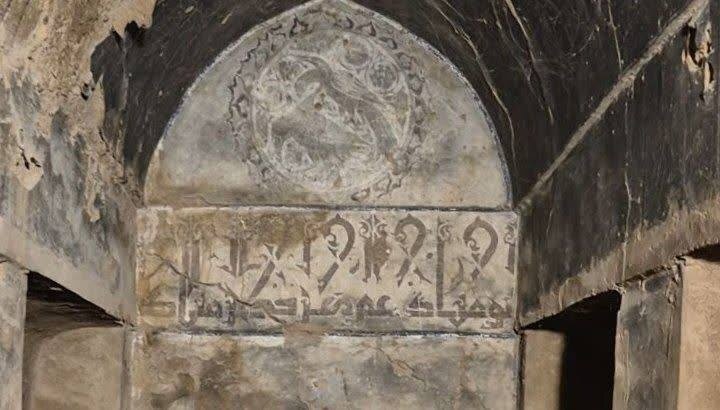Historical inscription deciphered in Yazd

TEHRAN - A historical inscription located the entrance of the Hosseinian House in Yazd has been fully deciphered as part of a local calligraphy workshop.
The Hosseinian House, also known as Tagh-e Bolandha, is a distinguished and well-preserved structure from the Ilkhanid period, situated in Yazd’s historic district, according to Seyyed Mohammad Rastegari, the tourism chief of Yazd province.
The inscription that bears Kufic and Persian scripts, is particularly significant as it features Iranian phrases and poetic expressions, emphasizing the cultural richness of the period, the official said.
“The inscription was first discovered in 2005 by a provincial team of cultural heritage experts specializing in biological damage control for historical buildings.”
Then, a team of restoration experts began the task of deciphering it, with parts initially translated by the late Abdullah Qouchani. Recently, further progress was made by calligraphy masters Zahra Rashidi and Aliyeh-Sadat Najafi during the Kufic workshop, the official explained.
The inscription includes poetic lines such as:
"May your days, months, and years be auspicious,
May Norouz, Mehregan, autumn, and spring bring joy to you."
The inclusion of these verses highlights the cultural connection to traditional Iranian festivals, such as Mehregan, which was recently inscribed on UNESCO’s list of Intangible Cultural Heritage.
Given its historical and cultural value, experts emphasize the need for the complete restoration and stabilization of the inscription to make it accessible to the public. The Hosseinian House and its inscription offer a unique window into the artistic and linguistic heritage of Iran's Ilkhanid era.
A don’t miss destination
In July 2017, the historical core of Yazd, the provincial capital, was named a UNESCO World Heritage site. Yazd is regularly referred to as a delightful place to stay, or a “don’t miss” destination by almost all of its visitors. The city is full of mudbrick houses that are equipped with innovative badgirs (wind catchers), atmospheric alleyways, and many Islamic and Iranian monuments that shape its eye-catching city landscape.
Cultural heritage experts believe that Yazd is a living testimony to the intelligent use of limited available resources in the desert for survival. Water is brought to the city by the qanat system. Each district of the city is built on a qanat and has a communal center. Furthermore, the use of earth in buildings includes walls and roofs through the construction of vaults and domes. Houses are built with courtyards below ground level, serving underground areas. Wind-catchers, courtyards, and thick earthen walls create a pleasant microclimate.
The historical core of Yazd is chockfull of mudbrick houses, bazaars, public bathhouses, water cisterns, mosques, synagogues, Zoroastrian temples, and centuries-old gardens. From the divine point of view, the city enjoys the peaceful coexistence of three religions: Islam, Judaism, and Zoroastrianism.
Yazd is home to numerous qanats which have supplied water to agricultural and permanent settlements for thousands of years. The man-carved underground qanat system relies on snow-fed streams flowing down the foothills of surrounding mountains. The earliest water supply to Yazd is estimated to date from the Sassanid era (224 to 651 CE). However, many others have been continually repaired and used over time, and most surviving Ab-Anbars (traditional mudbrick cisterns) can today be traced to the late Safavid and Qajar periods.
AM
Leave a Comment